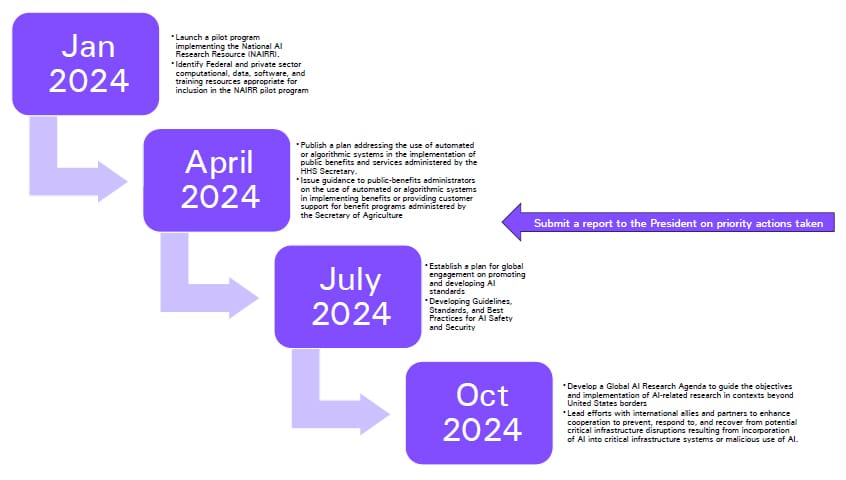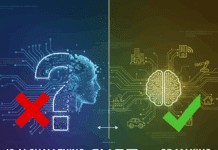A new Biden executive order calls for responsible AI principles that ensure innovation and growth with safety and privacy, without promoting biases of any kind. It’s something all of us need to follow.
As I write this, the US administration has issued an executive order on ensuring the safe, secure, and trustworthy development and use of AI. This government involvement underscores the rapid adoption of AI, necessitating the need for an executive order — a first of its kind on technology adoption. While the order focuses on the US and its interests in addressing security, the economy, and society, it also provides a framework for industries and organisations to adopt in their AI journey, with a deliberate focus on its core principles. The article attempts to elaborate on the guiding principles and to outline key actions that will shape the industry in the coming years.
As per the executive order, responsible AI adoption with secure and reliable data is to be governed by eight guiding principles and priorities. Let’s look at each one of them to understand what they entail and the expectations they set.
Ensuring AI safety and security
The first guiding principle of the executive order emphasises the importance of ensuring that AI is developed and used in a safe and secure manner. This principle recognises that AI has the potential to cause harm if it is not properly designed, tested, and monitored. To achieve this goal, the order calls for the development of standards and best practices for AI safety and security, as well as mechanisms for identifying and mitigating risks associated with AI. The order also encourages the use of privacy-enhancing technologies and other measures to protect sensitive data and prevent unauthorised access to AI systems.
Promoting responsible innovation, competition, and collaboration
The second guiding principle of the executive order focuses on promoting responsible innovation, competition, and collaboration in the development and use of AI. This principle recognises that AI has the potential to drive economic growth and innovation while also acknowledging the need to ensure that these benefits are shared fairly and equitably. To achieve this goal, the order calls for the promotion of public-private partnerships, the development of AI standards and best practices, and the establishment of mechanisms for sharing data and other resources. The order also encourages the use of open data and open source software to promote collaboration and innovation.

Supporting American workers in responsible AI development
The third guiding principle of the executive order emphasises the importance of supporting American workers in the development and use of AI. This principle recognises that AI has the potential to displace workers and exacerbate existing inequalities. It calls for measures to ensure that workers are trained and equipped to succeed in the AI-driven economy. To achieve this goal, the order calls for the development of workforce training programs, the promotion of apprenticeships and other forms of on-the-job training, and the establishment of mechanisms for worker participation in the development and deployment of AI systems. The order also encourages the use of AI to improve working conditions and increase productivity.
Advancing equity and civil rights in AI
The fourth guiding principle of the executive order emphasises the importance of advancing equity and civil rights in the development and use of AI. This principle recognises that AI has the potential to perpetuate and exacerbate existing biases and inequalities, calling for measures to ensure that AI is developed and used in a fair and equitable manner. To achieve this goal, the order calls for the development of AI standards and best practices that promote fairness, transparency, and accountability, as well as mechanisms for identifying and mitigating bias in AI systems. It also encourages the use of AI to promote diversity and inclusion in the workplace and in society at large.
Protecting user interests in AI and AI-enabled products
The fifth guiding principle of the executive order emphasises the importance of protecting the interests of Americans who use, interact with, or purchase AI and AI-enabled products in their daily lives. This principle recognises that AI has the potential to impact consumers in a variety of ways. It calls for measures to ensure that consumers are protected from harm and have access to accurate and transparent information about AI systems. To achieve this goal, the order calls for the development of consumer protection policies and regulations, as well as mechanisms for monitoring and enforcing these policies. It also encourages the use of AI to improve consumer experiences and increase access to information.
Protecting privacy and civil liberties in AI
The sixth guiding principle of the executive order emphasises the importance of protecting Americans’ privacy and civil liberties as AI continues to advance. This principle recognises that AI can collect and analyse vast amounts of personal data and calls for measures to ensure that this data is collected, stored, and used in a manner that respects individuals’ privacy and civil liberties. To achieve this goal, the order calls for the development of privacy-enhancing technologies and other measures to protect sensitive data, as well as mechanisms for monitoring and enforcing privacy policies. It also encourages the use of AI to enhance privacy and security.

Regulating and governing AI risks
The seventh guiding principle of the executive order emphasises the importance of managing the risks associated with the federal government’s use of AI and increasing its internal capacity to regulate, govern, and support responsible use of AI. This principle recognises that the federal government is a major user and developer of AI, calling for measures to ensure that AI is developed and used in a manner consistent with public interest. To achieve this goal, the order calls for the development of AI policies and regulations that promote transparency, accountability, and public participation, as well as mechanisms for monitoring and enforcing these policies. The order also encourages the use of AI to improve government services and increase efficiency.
Promoting innovation and competition with leadership
The eighth guiding principle of the executive order emphasises the importance of promoting innovation and competition in the development and use of AI. This principle recognises that AI has the potential to drive economic growth and innovation, and calls for measures to ensure that these benefits are shared fairly and equitably. To achieve this goal, the order calls for the promotion of public-private partnerships, the development of AI standards and best practices, and mechanisms for sharing data and other resources. It also encourages the use of open data and open source software to promote collaboration and innovation.
These principles aim to ensure that AI is developed and used in a responsible and safe manner, while also promoting innovation, competition, and collaboration. They also prioritise supporting American workers, advancing equity and civil rights, protecting consumers, and safeguarding privacy and civil liberties. The executive order emphasises that these principles should be adhered to by executive departments and agencies while considering the views of other agencies, industry, members of academia, civil society, labour unions, international allies and partners, and other relevant organisations.
These calls for action aim to promote safe, responsible, fair, privacy-protecting, and trustworthy AI systems; support small businesses in innovating and commercialising AI, advance responsible global technical standards for AI development and use outside of military and intelligence areas, and address cross-border and global AI risks to critical infrastructure.
‘Red Teaming’ is a common practice where organisations hire ethical hackers to emulate real attacks against enterprise systems to ensure appropriate security measures are in place. This practice is evolving to ensure the adoption of responsible AI. OpenAI has created a community for the open source world to collaborate and communicate in the development of a framework with a network of industry experts. Although private organisations are going to invest in similar efforts, it’s encouraging to see rapid developments in the open source community for establishing a platform for individuals to join and contribute to the positive impacts of AI.
In conclusion, AI is a transformative force that unlocks the creative potential within all of us. By harnessing the power of AI responsibly in the data age, we can unleash our imagination, redefine creativity, and embark on a journey of boundless innovation. It’s the dawn of a new era as technology advances and industries adopt responsible AI, making it an integral part of our daily lives.
Disclaimer: This article expresses the views of the author and not of the organisation he works in.
















































































